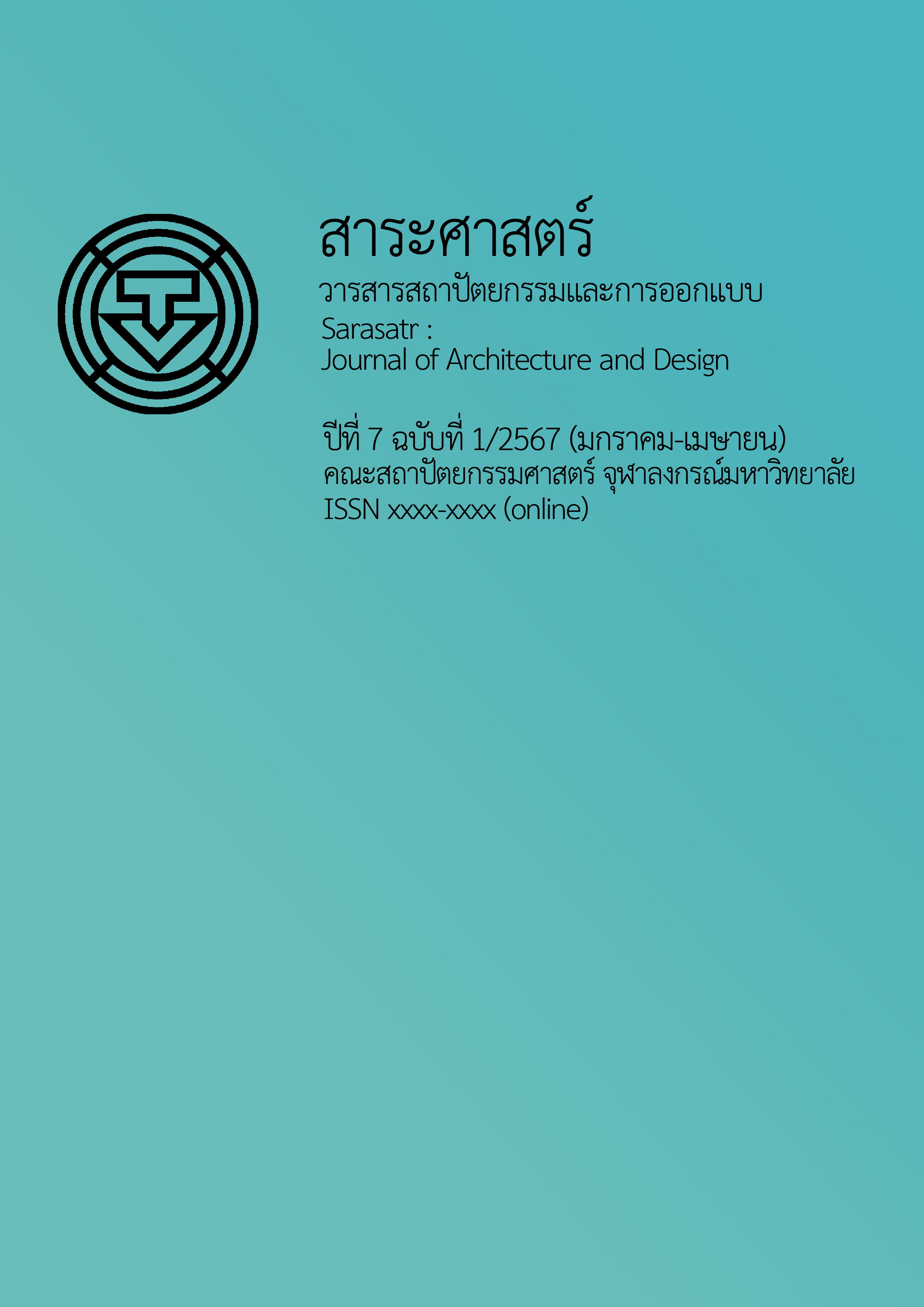Ceramic Cladding for Tropical Environmental Performance
Main Article Content
Abstract
This design research project questions how ceramic cladding systems correspond to tropical environments. This research began by uncovering precedents from Thai traditional architecture and applications of ceramics in architectural ornamentation. They are used as a decorative feature but not for the ventilation screen. Thai Modernism, particularly from 1950 to 1970, used concrete screens to create comfortable interior environments by blocking the sun and rain while wind penetrates the screen for cooling. This initial study explores the possibility of developing a ceramic cladding system that responds to tropical environments. The performance of the screen is simulated through computer software (Rhinoceros 7.0, including plug-ins such as Grasshopper/Ladybug for sunlight analysis, and ArchiDynamics for wind simulation). After a series of prototypes, the team completed the ceramic cladding and installed it at Koto Tea Space in Bangkok. The team tested its performance for brightness, airflow, and temperature. As a result of these tests, the cladding system demonstrated an ability to block sunlight and mediate wind, but there was no impact on temperature. This research demonstrates a potential application for ceramic cladding in architecture that can also be adapted to specific sites.
Article Details
References
Bansal, N. (2010). Processing and properties of advanced ceramics and composites II. John Wiley & Sons.
Bean, R. (2014). Lighting: Interior and exterior. Routledge.
Beaufort Wind Scale. (2022). National weather service. https://www.weather.gov/mfl/beaufort
Bechthold, M., Kane. A., & King, N. (2015). Ceramic material systems: In architecture and interior design. Birkhäuser.
Group Building no. 24. (2008). Docomomo Thailand. https://www.docomomothailand.org/pages/no24.html
Jotisalikorn, C., & Bhumadhon, P. (2012). Classic Thai: Design, interiors, architecture. Tuttle.
Lechner, N. (2009). Heating, cooling, lighting: Sustainable design methods for architects. John Willey & Sons.
Menges, A. (2007). Computational morphogenesis: Integral form generation and materialization processes. Ascaad 3rd Int’l ASCAAD Conference on Em‘body’ing Virtual Architecture [ASCAAD-07] (pp.725-744). Alexandria, Egypt. https://papers.cumincad.org/data/works/att/ascaad2007_057.content.pdf
Nicol, F. (2015). Standards for thermal comfort. In M. Humphreys, O. Sykes, & S. Roaf (Eds.), Standards for thermal comfort: Indoor air temperature standards for the 21st century (pp. 31-39). CRC Press.
Tiptus, P. (1992). An architectural digest... from the past to the present. The Association of Siamese Architects.


